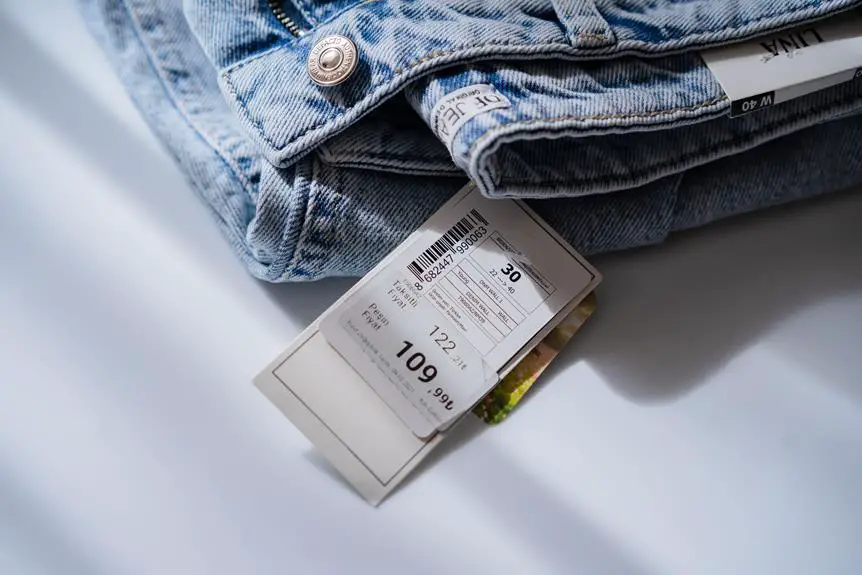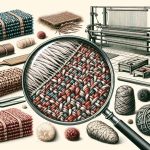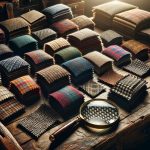Are you wondering if tweed fabric is worth the price?
Exploring the quality and cost of tweed can help you make informed decisions when adding this classic textile to your collection. Understanding the unique characteristics of tweed, the factors that affect its pricing, and how to assess its quality will give you mastery over your purchasing choices.
In this exploration, we will delve into the world of tweed, comparing it with other fabrics to help you determine if it's worth the investment.
Let's unravel the intricacies of tweed fabric together.
Key Takeaways
- The pricing of tweed fabric is influenced by factors such as the production process, material sourcing, and the choice between traditional hand-weaving and modern machine weaving.
- The quality of tweed can be assessed based on factors such as the weave, weight, texture, and color variations, which determine its value and durability.
- When comparing tweed with other fabrics, it is important to consider the unique characteristics and benefits that each fabric offers.
- To make informed decisions when purchasing tweed, one should evaluate the fabric weight, texture, and weave to ensure that it meets specific needs and requirements.
The Unique Characteristics of Tweed
Tweed fabric offers a distinctive blend of durability, warmth, and texture that sets it apart from other materials. Its durability is unparalleled, making it an excellent choice for garments that need to withstand regular wear and tear. The tight weave of tweed not only adds to its durability but also contributes to its insulation properties, keeping you warm and cozy in colder climates.
This unique combination of durability and insulation makes tweed an ideal choice for outerwear, especially in regions with harsh winters. The insulation properties of tweed are a result of its ability to trap and retain heat, making it a practical and stylish option for those looking to stay warm without sacrificing fashion.
Whether you're facing a chilly day in the countryside or navigating a brisk urban environment, tweed's insulation properties ensure that you stay comfortable and snug. Understanding these unique characteristics of tweed can help you appreciate its value and make informed decisions when considering it for your wardrobe.
Factors Affecting Tweed Fabric Pricing
When considering the factors affecting tweed fabric pricing, you may frequently encounter variations based on the wool quality and production methods used.
The production process plays a significant role in determining the cost of tweed fabric. Tweed production often involves intricate weaving techniques and meticulous attention to detail, which can increase the overall production costs.
Additionally, the material sourcing is another crucial factor influencing tweed fabric pricing. The quality of wool and the sourcing of materials can greatly impact the final cost of tweed fabric. High-quality wool sourced from specific regions known for producing superior fibers may result in a higher-priced tweed fabric due to the premium nature of the raw materials.
Moreover, the production method, whether it's traditional hand-weaving or modern machine weaving, can also influence the pricing of tweed fabric. Hand-weaved tweed, for instance, often commands a higher price due to the skilled labor and time-intensive nature of the process.
Understanding these factors can provide insight into why tweed fabric varies in price and help you make informed purchasing decisions.
Assessing the Quality of Tweed
Assessing the quality of tweed can be done by examining its weave, weight, and overall texture, which are crucial factors in determining its value and durability. By carefully assessing these characteristics, you can gain a deeper understanding of the worth of the tweed fabric you are considering.
| Characteristics | Description | Importance |
|---|---|---|
| Weave | Tweed fabric can have a plain, twill, or herringbone weave. Each type affects the fabric's strength and durability. | Essential for durability and visual appeal. |
| Weight | The weight of tweed varies depending on the type of wool used and the density of the weave. Lighter tweeds are ideal for drapery, while heavier tweeds are great for outerwear. | Affects the fabric's versatility and functionality. |
| Texture | Tweed's texture is a result of the weaving techniques used, creating a unique tactile experience. Additionally, texture can influence the fabric's warmth and comfort. | Contributes to the overall aesthetic and feel. |
| Color Variations | Tweed is known for its rich, earthy tones and subtle color variations, which add depth and character to the fabric. | Adds visual interest and individuality. |
Assessing the quality of tweed allows you to understand how the fabric will perform over time and its suitability for specific uses. By considering factors such as durability, texture, color variations, and weaving techniques, you can make an informed decision when purchasing tweed fabric.
Comparing Tweed With Other Fabrics
Considering various fabrics for your project? Tweed fabric stands out due to its unique characteristics and durability. When comparing tweed with silk, it's important to note that tweed is a coarse woolen fabric, known for its warmth and rugged texture, while silk is a luxurious, smooth, and lightweight fabric.
Tweed is more suitable for outerwear and casual garments, providing excellent insulation and a rustic charm, whereas silk is often used for formal attire and delicate, elegant pieces.
On the other hand, when weighing wool versus cotton, tweed, being a type of wool fabric, offers superior warmth and water-resistance, making it ideal for colder climates and outdoor activities. Cotton, a breathable and lightweight fabric, is better suited for warm weather and everyday wear.
Understanding the distinctions between tweed and these other fabrics can help you make an informed decision based on the specific requirements of your project. Whether you prioritize durability, texture, or functionality, each fabric offers unique benefits to consider.
Making Informed Decisions When Purchasing Tweed
To make an informed purchase decision when buying tweed, assess the fabric's weight, texture, and weave to ensure it meets your specific needs.
Start by evaluating the fabric's weight. Tweed comes in various weights, from light to heavy, and each weight has different characteristics. Lighter tweeds are more suitable for indoor wear or warm climates, whereas heavier tweeds offer better insulation and are ideal for colder weather.
Next, consider the texture of the tweed. The texture not only affects the fabric's appearance but also influences its durability. Tweeds with a tighter weave and denser texture tend to be more durable and resistant to wear and tear.
Lastly, examine the weave of the tweed. Tweed can be plain, twill, or herringbone weave, each with its own unique look and feel. Understanding the weave can help you determine the overall durability and performance of the fabric.
Frequently Asked Questions
What Are the Different Types of Tweed Fabric Available in the Market?
There are various types of tweed fabric available, including Harris Tweed, Donegal Tweed, and Tweed Blends. Each offers unique textures and patterns, making them suitable for suiting and versatile for different styles.
Can Tweed Fabric Be Used for Both Casual and Formal Attire?
Tweed fabric's versatility makes it perfect for both casual and formal attire. With its rich texture and warm feel, you have endless styling options. It's a timeless choice that adds elegance to any outfit.
Are There Any Specific Care Instructions for Maintaining the Quality of Tweed Fabric?
To maintain the quality and longevity of tweed fabric, follow these fabric care instructions. Regularly brush off any debris, spot clean as needed, and dry clean when necessary. Proper maintenance is key to ensuring durability.
How Does the Environmental Impact of Tweed Production Compare to Other Fabrics?
When considering tweed fabric, the environmental impact varies depending on the production practices. Some tweed manufacturers prioritize sustainability, using eco-friendly dyes and ethical sourcing. It's worth researching brands with strong sustainability practices.
Are There Any Ethical Considerations to Keep in Mind When Purchasing Tweed Fabric?
When purchasing tweed fabric, consider ethical sourcing and sustainable production. Look for brands that prioritize fair labor practices and use environmentally friendly production methods. By making mindful choices, you can support ethical and sustainable practices in the textile industry.
- How Does Ring Spun Cotton Affect Garment Fit and Shape Retention? - August 13, 2024
- What Are the Challenges in Producing Ring Spun Cotton? - August 13, 2024
- Is Ring Spun Cotton Suitable for Plus-Size Clothing? - August 13, 2024







